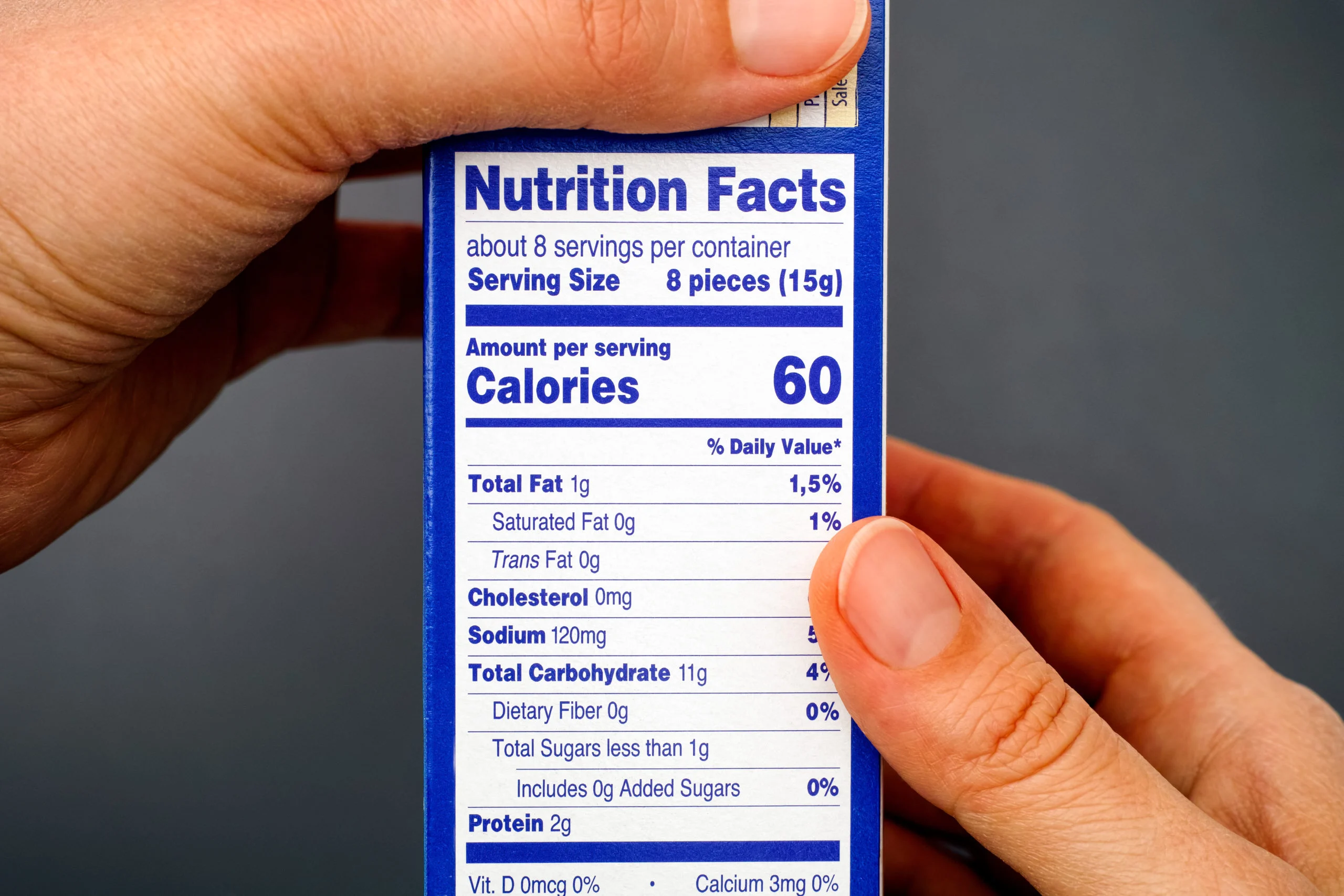In today’s complex food landscape, making informed choices about what you eat can feel like deciphering a secret code. But it doesn’t have to be. The U.S. Nutrition Facts label is a powerful, standardized tool designed to put the power back in your hands, giving you a clear window into the nutritional composition of packaged foods. Learning to read it “like a pro” is not about restrictive dieting; it’s about empowering yourself to make choices that genuinely nourish your body and support your long-term health goals, whether that’s managing weight, controlling blood pressure, or simply eating more wholesome foods.
This comprehensive guide will walk you through every section of the U.S. Nutrition Facts label, helping you cut through the marketing hype and focus on the information that truly matters. We’ll explore the significance of the 2016 label updates, delve into the science behind key nutrients, and provide actionable strategies you can implement on your next grocery trip. By the end, you’ll feel confident, reassured, and ready to use this essential health tool like the expert you are.
Unlocking the Foundation: Serving Size and Calories
The journey to decoding the nutrition label begins right at the top, with the Serving Size and Servings Per Container. This section is the most critical starting point because all the nutrient values listed below are based entirely on this amount. Misunderstanding this first step is the single biggest mistake consumers make.
The True Meaning of Serving Size
The Serving Size is a standardized amount, often listed in familiar units (like ‘1 cup’ or ‘4 cookies’) followed by the metric weight in grams (g).
- Crucial Insight: The serving size is not a recommendation for how much you should eat; it reflects the amount people typically consume.
- The Multiplier Effect: Always check the Servings Per Container. If a package lists “4 servings” and you eat the entire package, you must multiply every value on the label—calories, fat, sugar, sodium, etc.—by four. This is especially important for items like small bags of chips, sodas, or frozen meals which, while seemingly single-serving, might contain two or more.
Calories: Energy for Your Body
The number of Calories listed is the total energy provided by one serving of the food. Since the 2016 update, the calorie count is now featured in a larger, bolder font, emphasizing its role in weight management.
- Calorie Management: If your goal is weight management, you must balance the calories you consume with the calories your body uses. Consuming a product with 300 calories per serving might seem fine, but if you eat three servings, you’ve just consumed 900 calories, which is nearly half of the general daily reference intake for many adults.
The Pillars of Nutrition: Fats, Cholesterol, and Sodium
The next section details the macronutrients and other components you should often monitor. It’s helpful to remember the general rule: aim low for saturated fat, trans fat, and sodium.
Decoding the Fat Profile
The label lists Total Fat and then breaks it down into Saturated Fat and Trans Fat. The focus here is on the type of fat, not just the total amount.
- Saturated Fat: This fat is primarily found in animal products and some plant-based oils (like coconut and palm). High intake can raise low-density lipoprotein (LDL) cholesterol (the “bad” cholesterol), increasing heart disease risk. The Dietary Guidelines for Americans recommend limiting calories from saturated fat to less than 10% of your total daily calories.
- Trans Fat: The FDA has effectively banned artificially produced trans fats in most foods due to their direct link to increasing heart disease risk. If a product contains less than of trans fat per serving, the label can state . Pro Tip: Always check the ingredient list! If you see “partially hydrogenated oil,” the product contains some trans fat, and frequent consumption of multiple servings could lead to a significant intake.
- Unsaturated Fats: While not always broken out on the main label, monounsaturated and polyunsaturated fats (found in avocados, nuts, seeds, and certain oils) are generally considered the “good” fats and should be prioritized in your diet.
Sodium: The Hidden Contributor
Sodium (salt) is essential for nerve and muscle function, but excessive intake is directly linked to high blood pressure (hypertension), a major risk factor for heart disease and stroke.
- Limit Recommendation: Most healthy adults should aim for less than of sodium per day. If you have high blood pressure or other health concerns, your doctor might recommend a lower limit (e.g., ).
- Processed Food Culprit: Processed and pre-packaged foods are often the largest source of dietary sodium. Use the %DV (explained below) to quickly assess sodium content.
Carbohydrates, Fiber, and the Crucial ‘Added Sugars’
Carbohydrates are your body’s main source of energy. This section now offers more detail than ever before, thanks to the addition of Added Sugars.
Total Carbohydrates and Dietary Fiber
Total Carbohydrate includes dietary fiber, total sugars, and complex carbohydrates.
- Dietary Fiber: A non-digestible part of plant foods, fiber promotes bowel regularity, helps lower blood cholesterol, and contributes to a feeling of fullness. Aim high for fiber. Foods with or more per serving are considered excellent sources.
- The Science of Satiety: Research, including studies from institutions like the University of Massachusetts Medical School, has consistently shown that diets rich in dietary fiber are linked to a lower incidence of cardiovascular disease and type 2 diabetes. Fiber slows the absorption of glucose, leading to more stable blood sugar levels.
The Added Sugars Revolution
The most significant and health-focused change in the updated U.S. label is the mandatory listing of Added Sugars in grams and as a %DV.
- Natural vs. Added: The Total Sugars line includes both naturally occurring sugars (like those in fruit and milk) and added sugars. Added Sugars are sugars (including syrups, honey, and other caloric sweeteners) put into foods during processing. They add calories without significant nutritional value.
- The 10% Rule: The Dietary Guidelines for Americans recommends limiting your intake of calories from added sugars to less than 10% of your total daily calories. For a standard -calorie diet, this translates to no more than of added sugar per day.
- Actionable Tip: When comparing two products (e.g., two types of yogurt or cereal), the one with lower Added Sugars is almost always the healthier choice.
The Power Guide: Percent Daily Value (%DV)
The Percent Daily Value (%DV) is your ultimate shortcut to label mastery. It tells you the percentage of a specific nutrient in one serving of the food, based on a reference diet of calories per day.
- It’s a Standardized Barometer: The %DV allows you to quickly assess whether a serving contributes a little or a lot to your daily recommended intake for each nutrient, regardless of the confusing grams or milligrams.
- The Rule: This simple rule is the key to using the %DV like a pro:
- DV or Less: This is LOW. Aim for or less for nutrients you want to limit, such as Saturated Fat, Sodium, and Added Sugars.
- DV or More: This is HIGH. Aim for or more for beneficial nutrients you want to get more of, such as Dietary Fiber, Vitamin D, Calcium, Iron, and Potassium.
Table: Using the Rule to Make Smart Choices
Essential Nutrients: Vitamins and Minerals
At the very bottom of the label, you’ll find a list of vitamins and minerals. The label update strategically highlighted nutrients that Americans often struggle to get enough of.
- Required Nutrients: Vitamin D, Calcium, Iron, and Potassium are now required on the label. Vitamin D and Potassium were added because deficiencies in these nutrients are common in the U.S. population.
- Vitamin D: Crucial for bone health and immune function.
- Calcium: Essential for strong bones and teeth.
- Iron: Necessary for red blood cell production and oxygen transport.
- Potassium: Helps counterbalance sodium and is important for blood pressure control.
- Seeking High Values: For these four required nutrients, consistently choose foods that provide a high %DV (ideally or more) to ensure you are meeting your daily needs.
The Ingredient List: Beyond the Numbers
While technically separate from the main panel, the ingredient list is an integral part of reading a food package like a pro. This list provides qualitative information—it tells you what you are eating.
Order Matters
Ingredients are listed in descending order by weight. This means the ingredient that weighs the most is listed first, and the ingredient that weighs the least is listed last.
- Pro Tip: If sugar (or a type of sugar like high-fructose corn syrup, dextrose, or maltose) is one of the first three ingredients, the product is primarily made of sugar.
- Identify Processed Foods: Generally, a shorter, recognizable ingredient list suggests a less processed product. If the list is long and contains many terms you cannot pronounce, it is likely a highly processed food.
Hidden Sugars and Fats
Be aware of the many names manufacturers use for added sugars, which can artificially push the main “sugar” ingredient lower on the list.
The Science of Comprehension: Why Labels Work
The shift in label design was informed by consumer behavior research. Studies from institutions like the Centers for Disease Control and Prevention (CDC) and various public health universities have repeatedly shown that many consumers struggle with label literacy, particularly with tasks requiring complex math, such as calculating total calories for an entire package.
- Design for Health Literacy: The larger, bolder font for Calories and the clear, mandatory listing of Added Sugars were specific design changes intended to make the most critical health information instantly accessible, even to those with lower levels of health literacy. This streamlining helps consumers make faster, more accurate choices at the point of purchase.
Actionable Strategies: Using the Label Every Day
You now possess the knowledge. Here’s how to integrate this pro-level label reading into your daily life without becoming overwhelmed:
1. The Triple Check (Serving, Saturated Fat, Sodium)
When picking up a new product, run a quick mental check:
- Check Serving Size: How many servings are you actually going to eat? Adjust calories/nutrients mentally.
- Check Saturated Fat: Is the %DV or less?
- Check Sodium: Is the %DV or less?
2. Compare and Contrast
Use the %DV to compare similar products quickly. If choosing between two cereals:
- Choose the one with:
- Lower %DV for Added Sugars and Sodium.
- Higher %DV for Dietary Fiber.
3. The Ingredient List Test
Before buying, scan the first three ingredients: Are they whole, recognizable foods, or highly processed fats and sugars? Choose products where whole foods are at the top of the list.
Frequently Asked Questions (FAQs)
Q: Does the calorie diet on the label apply to me?
A: The -calorie diet is a general reference point used by the FDA to calculate the %DV for all food labels. It is not necessarily your personal calorie goal. Your individual caloric needs depend on your age, sex, weight, height, and physical activity level. However, you can still use the %DV as a guide to know if a food is high or low in a nutrient, regardless of your personal calorie target.
Q: Why do some food labels have two columns?
A: This is called “dual-column labeling.” It is required for products that are larger than a single serving but might reasonably be consumed in one sitting (e.g., a soda or a pint of ice cream). The two columns list the nutrition facts for one serving and for the entire package. This makes it instantly clear what you consume if you eat the whole container.
Q: I see “Sugar-Free” on a package. Does that mean it’s healthy?
A: Not necessarily. “Sugar-Free” means the product contains less than of sugar per serving. However, manufacturers often replace sugar with artificial sweeteners, sugar alcohols, or increase the fat or sodium content to maintain flavor. Always check the ingredient list for sweeteners and the %DV for fat and sodium before assuming it’s a healthy choice.
Q: What is the biggest difference between the old and new U.S. nutrition label?
A: The most significant changes are the mandatory listing of Added Sugars (with a %DV), the removal of “Calories from Fat,” and the updated list of required micronutrients (replacing Vitamins A and C with Vitamin D and Potassium). The calorie and serving size information are also now more prominent in a larger, bolder font.



